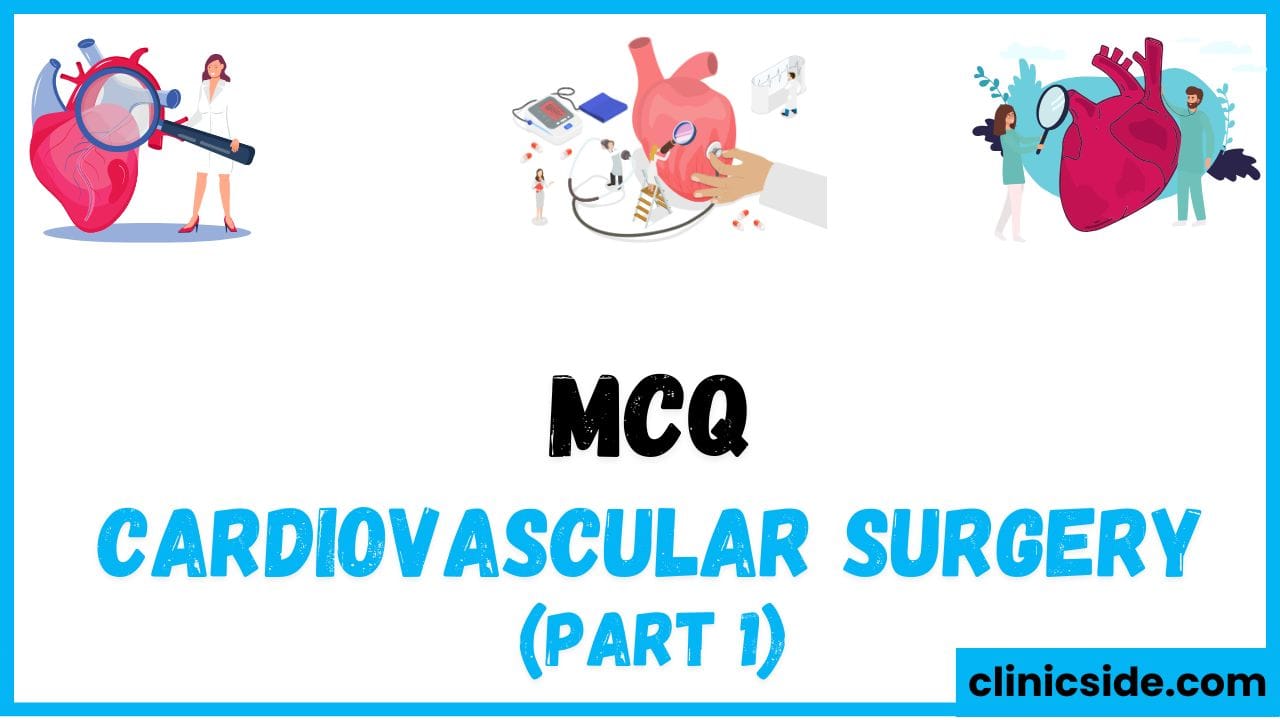Quiz
Available options: 1 to 20
Summary of Cardiovascular and Surgical MCQs
Objective of Coronary Artery Bypass Grafting (CABG)
The primary aim of CABG is to improve blood flow to the coronary arteries, bypassing blocked areas to restore oxygen delivery to the heart. This intervention is essential for alleviating symptoms like angina (chest pain) and reducing the risk of heart attacks. It does not primarily address high blood pressure, arrhythmias, or heart rate abnormalities, but indirectly enhances overall cardiac function.
Vein Selection for CABG
The great saphenous vein, located along the leg, is often harvested for use in bypass grafting. Its accessibility, sufficient length, and compatibility with arterial flow make it an excellent choice. While veins are commonly used, arteries like the internal mammary artery are often preferred for their higher long-term success rates in maintaining graft patency.
Reasons for Valve Replacement Surgery
Valve replacement is most commonly performed to treat valvular stenosis or regurgitation. Stenosis restricts blood flow, while regurgitation allows blood to flow backward, both of which strain the heart and reduce its efficiency. Surgical intervention restores the valve’s normal function, significantly improving heart performance and preventing complications like heart failure.
Mechanical Valves and Anticoagulation
Mechanical heart valves are known for their durability, often lasting for decades. However, they require patients to take anticoagulant medications, such as warfarin, indefinitely to prevent blood clot formation. Regular monitoring of the International Normalized Ratio (INR) ensures the medication’s effectiveness, with an ideal therapeutic range of 2.0–3.0 to balance clot prevention and bleeding risk.
Arterial Grafts Used in CABG
In addition to the great saphenous vein, the internal mammary artery (IMA) is frequently used as a graft in CABG. This artery is preferred for its robust structure and excellent long-term outcomes. The radial artery, taken from the forearm, is another option, though it is less commonly used than the IMA.
Diagnostic Tools for Coronary Artery Disease
Coronary angiography is the preferred imaging technique for diagnosing and evaluating coronary artery disease before surgery. This procedure involves injecting a contrast agent into the coronary arteries to visualize blockages through X-ray imaging. The detailed visualization allows surgeons to plan precise interventions like bypass grafting or angioplasty.
Key Medications After CABG
Aspirin is critical for preventing graft occlusion after CABG. By inhibiting platelet aggregation, it reduces the risk of clots forming in the newly grafted vessels. Other medications, such as beta-blockers or statins, may also be prescribed to manage heart health and prevent further arterial disease.
Congenital Heart Defects Requiring Surgery
The ventricular septal defect (VSD) is one of the most common congenital heart abnormalities requiring surgical correction. A VSD involves an opening between the heart’s ventricles, allowing oxygen-rich and oxygen-poor blood to mix. Surgery closes this defect, normalizing blood flow and preventing complications like heart failure or pulmonary hypertension.
Emergency Cardiovascular Surgery: Aortic Dissection Repair
An aortic dissection occurs when the inner layer of the aorta tears, allowing blood to flow between its layers and potentially causing a rupture. This condition is life-threatening and requires immediate surgical repair to stabilize the patient and restore the aorta’s integrity.
Role of Cardioplegia in Heart Surgery
During open-heart surgeries, cardioplegia is used to temporarily stop the heart, protecting it from damage and allowing surgeons to work on a motionless organ. By lowering the heart’s metabolic activity, cardioplegia preserves the heart muscle and ensures it remains functional after the procedure.
Arteries and Myocardial Infarction
The left anterior descending artery (LAD) is the most frequently involved artery in myocardial infarctions. Known as the “widow-maker,” its blockage can cause significant damage due to its role in supplying blood to the heart’s anterior wall and a large portion of the myocardium.
Management of Aortic Aneurysms
Surgical intervention for aortic aneurysms typically involves aortic aneurysm repair, where the damaged segment is replaced with a synthetic graft. This procedure prevents the risk of rupture, which can lead to life-threatening bleeding.
Impact of Untreated Atherosclerosis
When atherosclerosis is not addressed, it can lead to serious complications, including stroke, heart attack, and hypertension. These conditions arise from the narrowing of blood vessels caused by plaque buildup, which restricts blood flow and can trigger life-threatening events.
Postoperative Complications of CABG
Pleural effusion, or fluid accumulation around the lungs, is a common complication following CABG. It may cause discomfort and difficulty breathing. Severe cases require drainage to relieve symptoms and promote recovery.
Intraoperative Imaging for Valve Surgery
During valve surgeries, echocardiography is widely used to evaluate valve function in real time. This imaging technique provides valuable feedback to surgeons, helping ensure the procedure’s success and making adjustments as necessary





